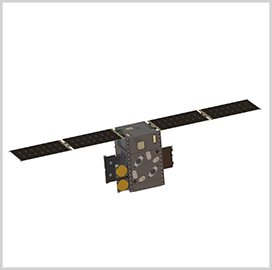The Air Force Research Laboratory’s small satellite is carrying out extended operations after completing its mission to assess the survivability and performance of commercial-off-the-shelf technologies in the geosynchronous Earth orbit.
The 12-unit CubeSat, dubbed Ascent, was developed as part of the Small Satellite Portfolio within the AFRL Space Vehicles Directorate and launched to GEO in December 2021, AFRL said Tuesday.
“Now that we have data that proves the effectiveness in that region, we will be monitoring for trends in spacecraft health over time, continuing nominal operations, and exploring options to transfer to another agency as a training or demonstrations asset,” said Capt. Sunderlin Jackson, program manager of Ascent.
Fifteen researchers from AFRL contributed to the Ascent program, which has $10 million in funding.
Ascent is the first CubeSat flown by AFRL to the GEO space environment.





